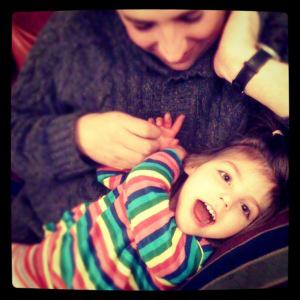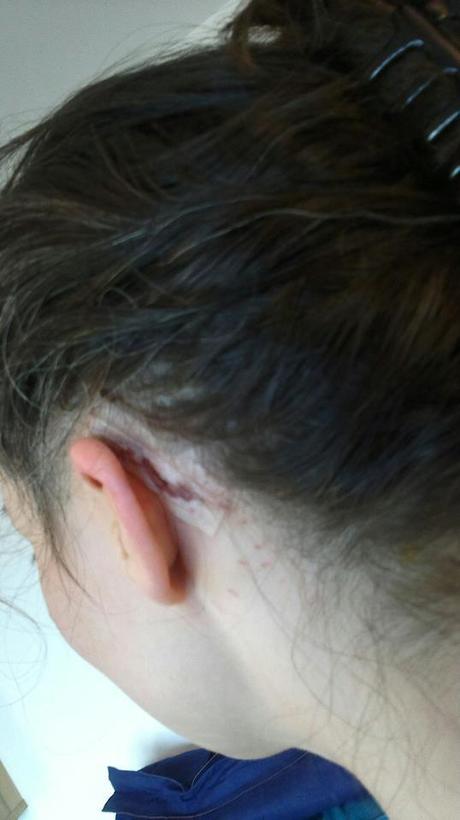I’d always envied Miles picking up on Isobel’s vocalisations. Unlike me, he had been able to adapt to his digital hearing aids almost as soon as he had them tuned to his specifications.

Miles and I have fairly similar levels of deafness. We both communicate using a mix of spoken English, SSE (sign supported English) and BSL; in conversation with non-signing people we rely on gesture, facial expression, good lighting, lip-reading, and the odd written note.
I believe in using all communication channels available to me – although as a deaf person, my life is ruled by visuals, rather than sound. My hearing aid is a peripheral device, not a primary one. Nonetheless, its supporting role is important. I have been a hearing aid user for most of my life. I had to switch to digital because the old analogue aids were being discontinued. So the last three years have been frustrating, both for me and for those close to me who don’t sign.
That hearing aid now lies discarded on my dresser. I have no interest in wearing it again – and I would have shrugged it off somewhat reluctantly and moved on, had it not been for Isobel.
Those who have read my post, Makaton vs. BSL: who decides? will know how committed I am to supporting Isobel’s language development. I am especially keen to do so now that her GDD (global developmental delay) has affected her speech.
Watching Miles at play with her I can see how much Isobel loves copying and inventing sounds – and how hard she works at producing them. Given her motor impairment, to expect her to develop clear and productive sign language skills would be unrealistic. The best we can do is to open up communication as much as possible – including regular vocalization.
I made the decision to get a cochlear implant on my own terms. No-one told me to do it. I would not dream either of imposing that decision on anyone else. The choice must always lie with the individual.
I have heard about medical professionals aggressively goading deaf clients into having it done – but my surgeon was not like that. In fact he kept me waiting a year, initially unconvinced that I would persevere after my experience with the digital aid.
(This is an important consideration. Due to its distinctive technology – which differs vastly from the hearing aid – the user has to retrain their brain to hear more effectively with it. The demands it places on the user to adjust is not a straightforward process, and can take years. For that reason, it should never be assumed that the cochlear implant will make the deaf person ‘hearing.’ It won’t, and never will.)
Of course, pregnancy factored in more delays. In that condition, you are not allowed to have an operation under general anaesthetic. Still, I never changed my mind once, and eventually – after yet another review – my surgeon agreed to carry out the procedure.

A devoted parent would lay down their lives for their children. Some hearing mothers learn to sign for their deaf children. I had a cochlear implant for mine.
Of course, as a child of deaf adults (CODA), Ben will benefit – that goes without saying. But Isobel is my original incentive, the one who finally convinced me to go for it. The path I have chosen is just part of a far larger journey: hers.

